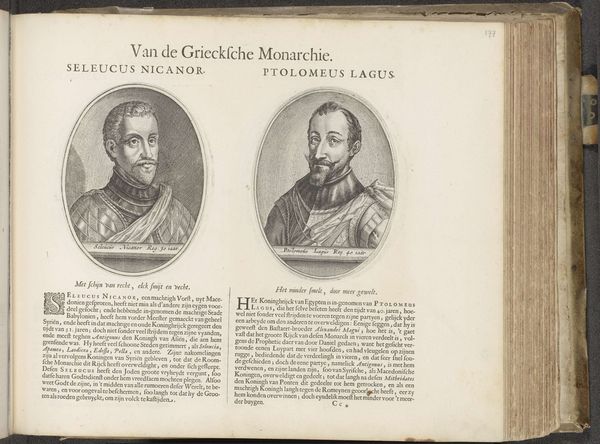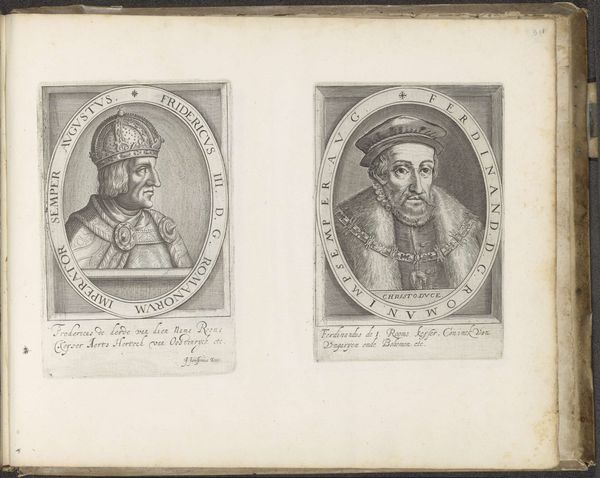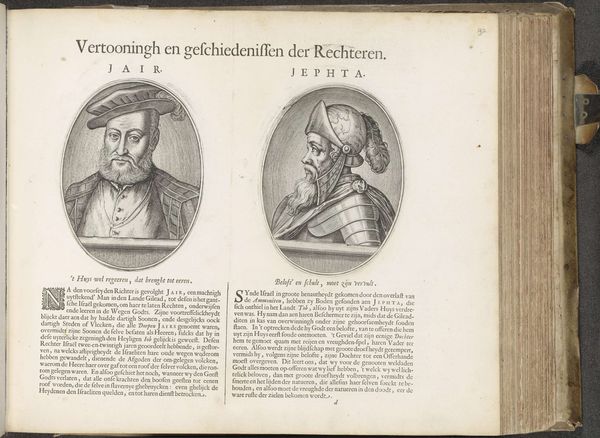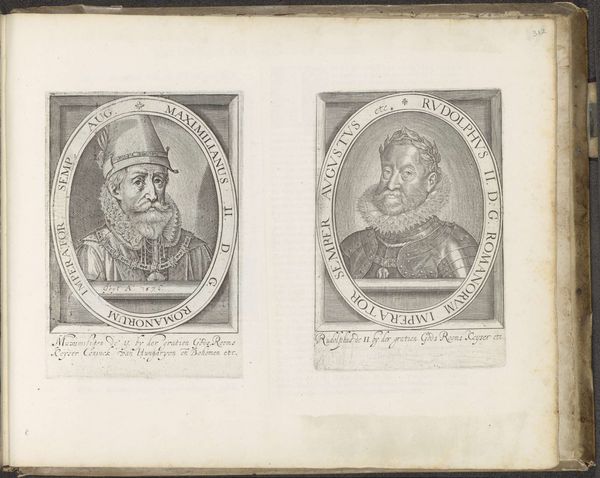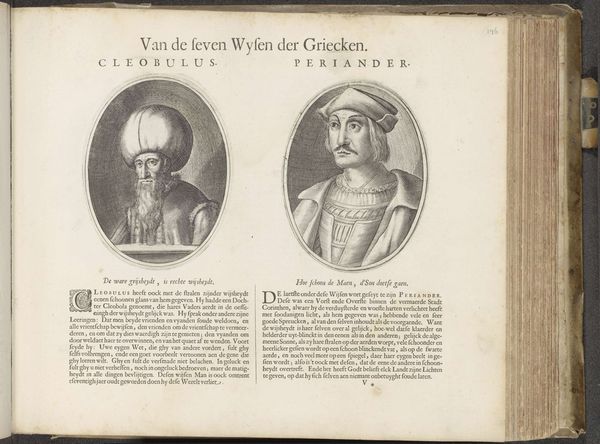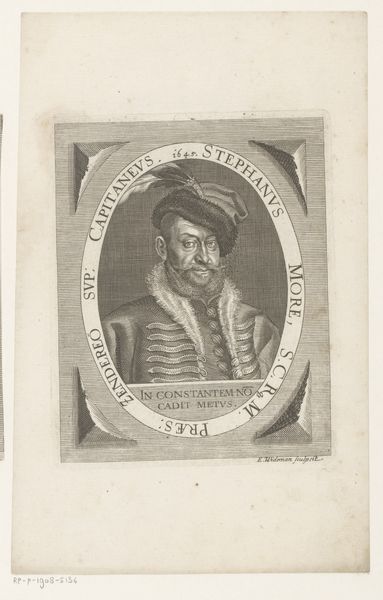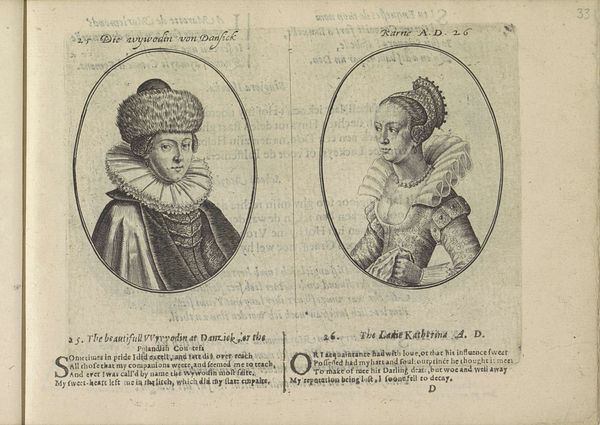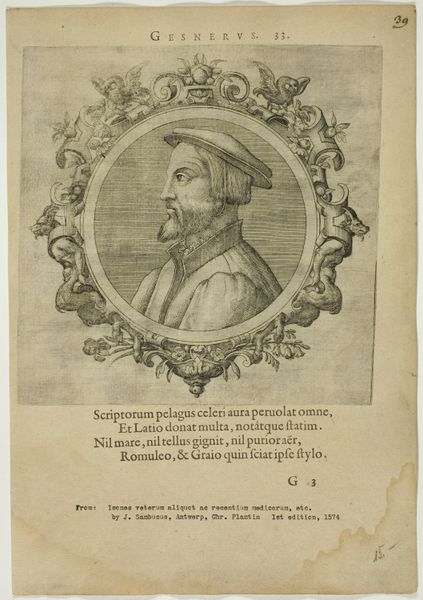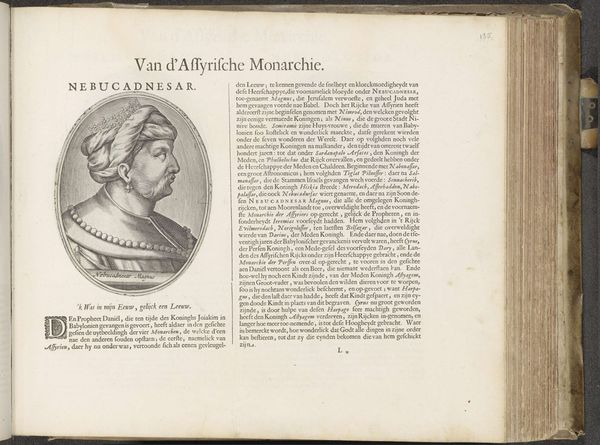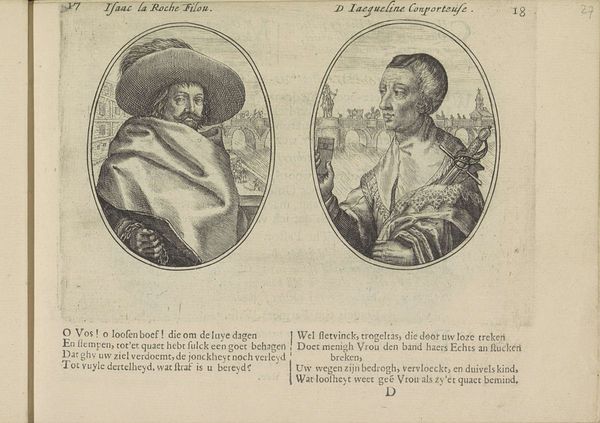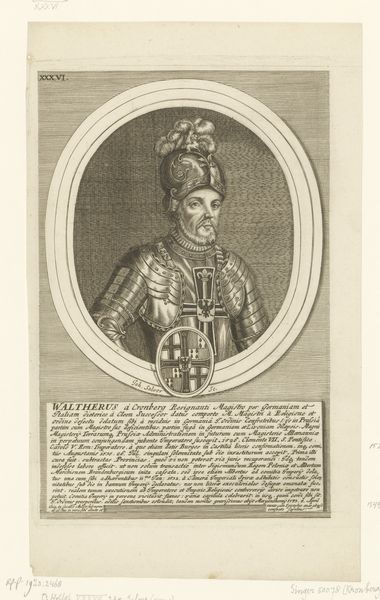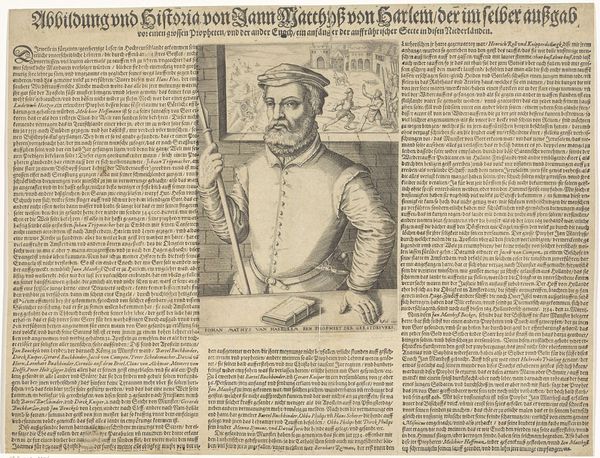
Portretten van de koningen Cyrus de Grote en Cambyses Possibly 1610 - 1654
0:00
0:00
drawing, print, engraving
#
portrait
#
drawing
#
baroque
# print
#
coloured pencil
#
history-painting
#
engraving
#
watercolor
Dimensions: height 143 mm, width 108 mm, height 138 mm, width 104 mm, height 294 mm, width 370 mm
Copyright: Rijks Museum: Open Domain
Curator: This engraving, possibly from 1610-1654, now held at the Rijksmuseum, presents portraits of the kings Cyrus the Great and Cambyses. The print offers a striking double portrait from a historical context. Editor: My first impression is quite somber. The use of monochrome emphasizes a sense of historical weight and seriousness. The two oval portraits look almost like medallions or commemorative seals. Curator: Precisely. The composition reinforces that feeling. Each ruler is framed separately within an oval, suggesting both their individual reigns and a connected lineage. The details of their clothing and headwear – those intricate turbans! – are quite striking given their Persian origin. The text beneath each portrait further grounds the image in its historical context, telling stories of their reign. Editor: There’s a certain formality that flattens the figures despite the attempts at detail in the rendering of their faces and costumes. I find the lack of dramatic light and shadow surprising. It feels deliberately unemotional, almost like a document, even if it contains dramatized biographical information as you pointed out. Curator: It's likely intended to convey a sense of authority and continuity, reflecting how these rulers were perceived and remembered. Symbols play a large part here; their headdresses and garments, while generally interpreted from imagination rather than historic records, signal their power. Remember too the function of prints in disseminating information and shaping historical narratives during this period. The very act of printing and distributing their images bestows importance. Editor: True. The symbolic weight of replicating images like these adds to their historical impact beyond mere representation. It highlights how important images are in the construction of cultural memory, doesn't it? The tight framing also reinforces the way that viewers might want to think about power--focused and framed. Curator: Absolutely. The choice to depict Cyrus and Cambyses in this manner – dignified and powerful – reflects the enduring legacy of these figures as founders and rulers in the visual imagination of the Baroque era. It is intriguing how it visually links cultural memory and power across centuries. Editor: Thinking about it structurally, even though I'm still struck by what I consider a flattening formality, there is real intentionality in creating symbolic authority with line and form here.
Comments
No comments
Be the first to comment and join the conversation on the ultimate creative platform.
